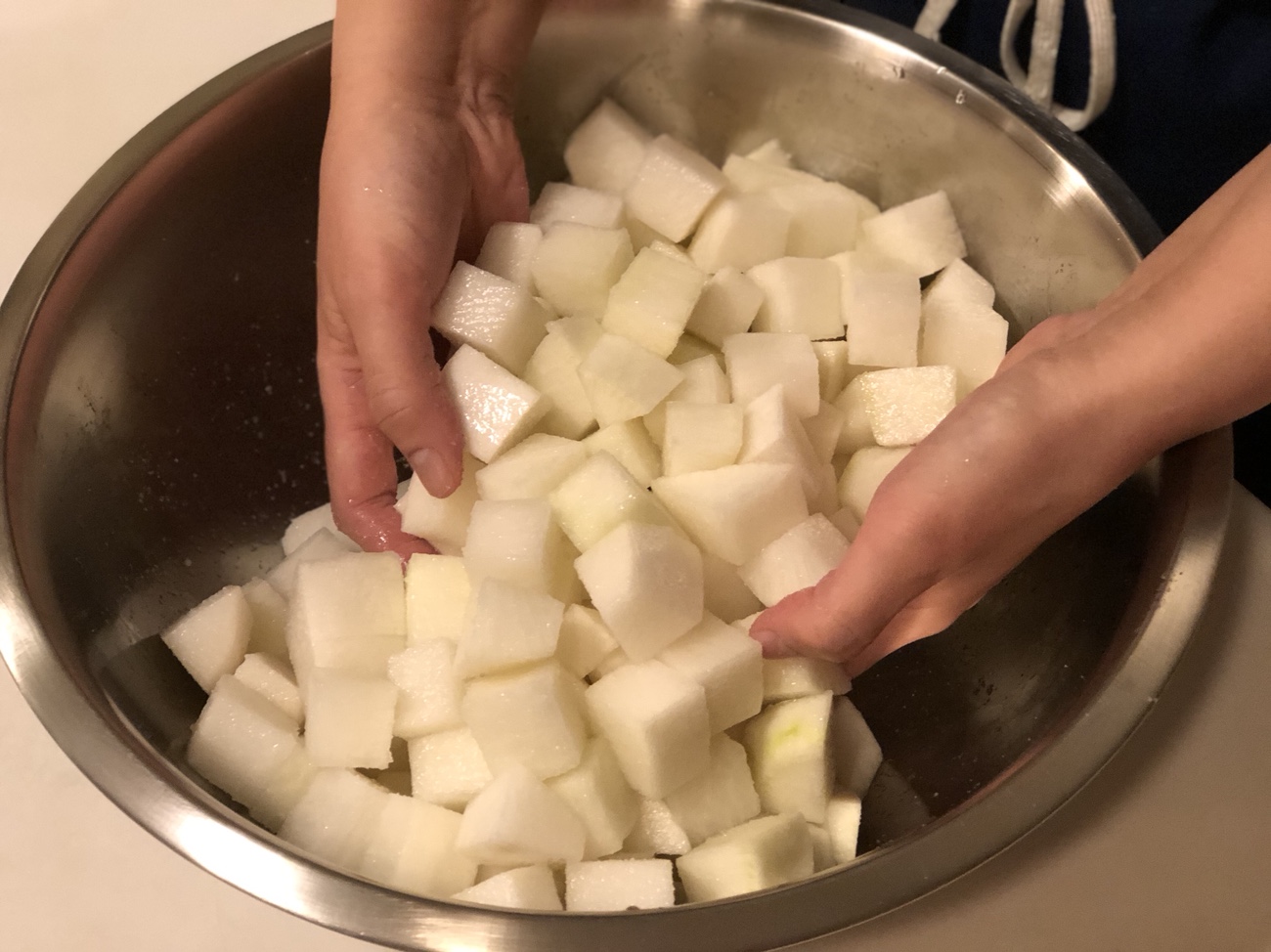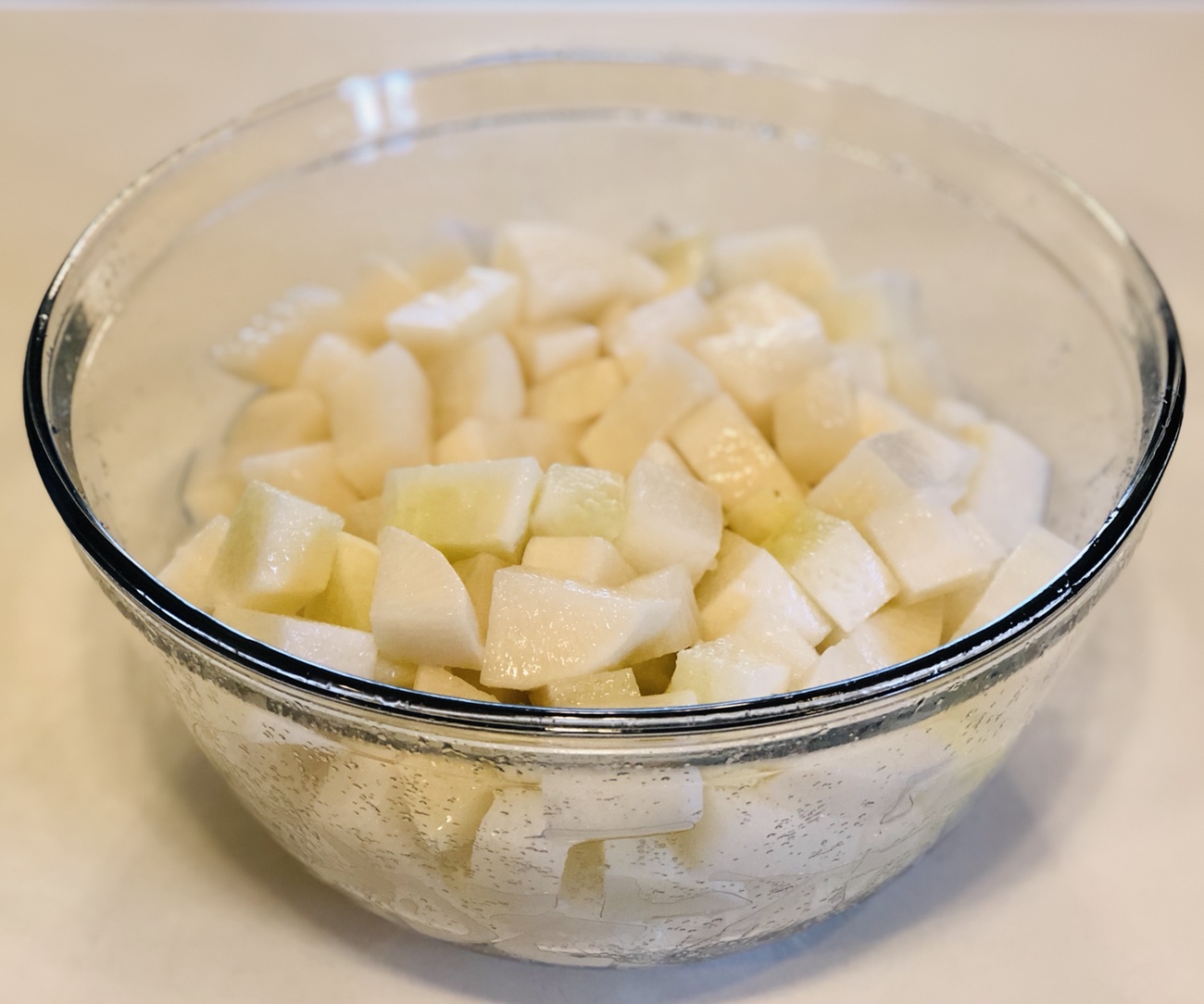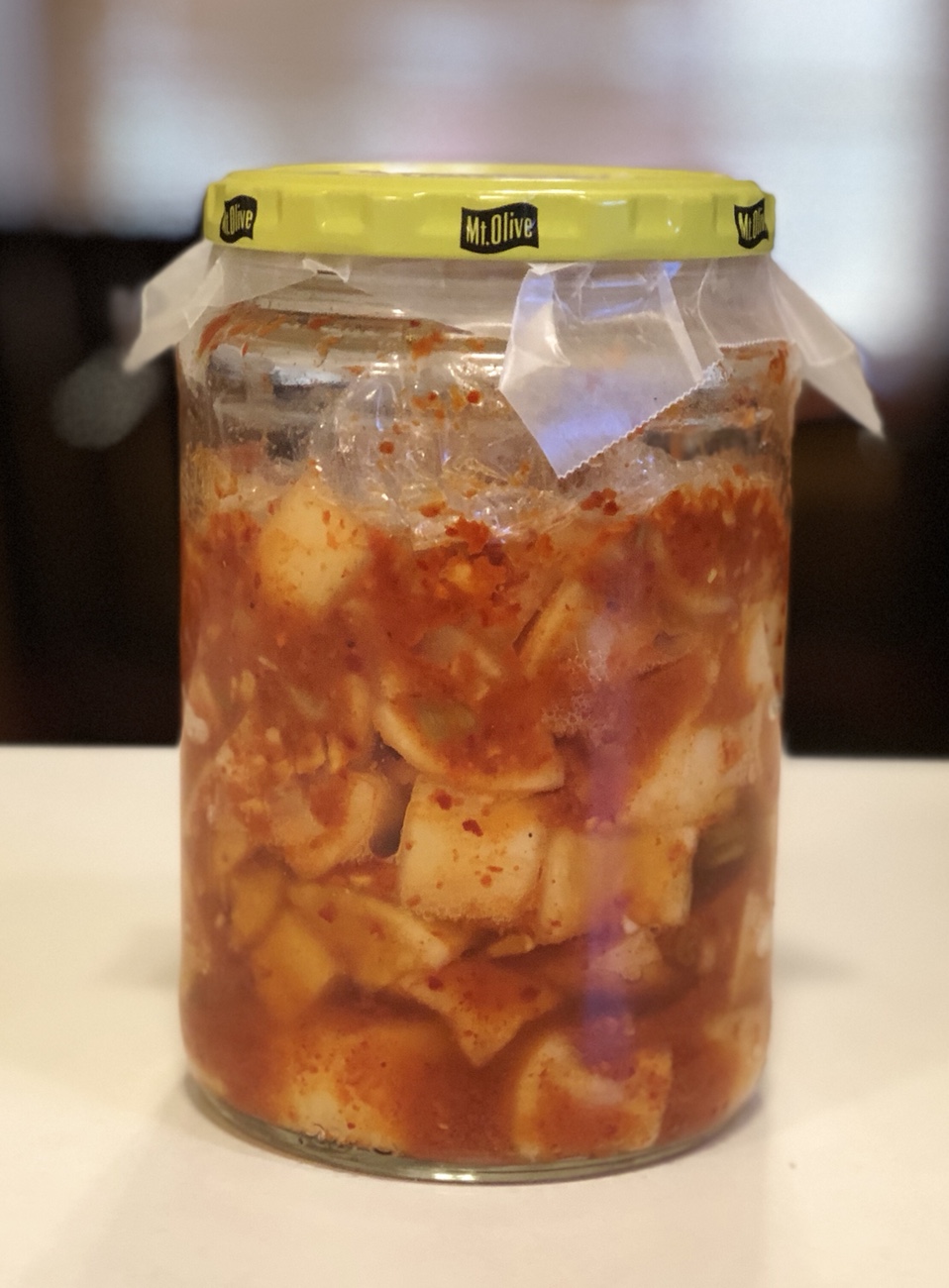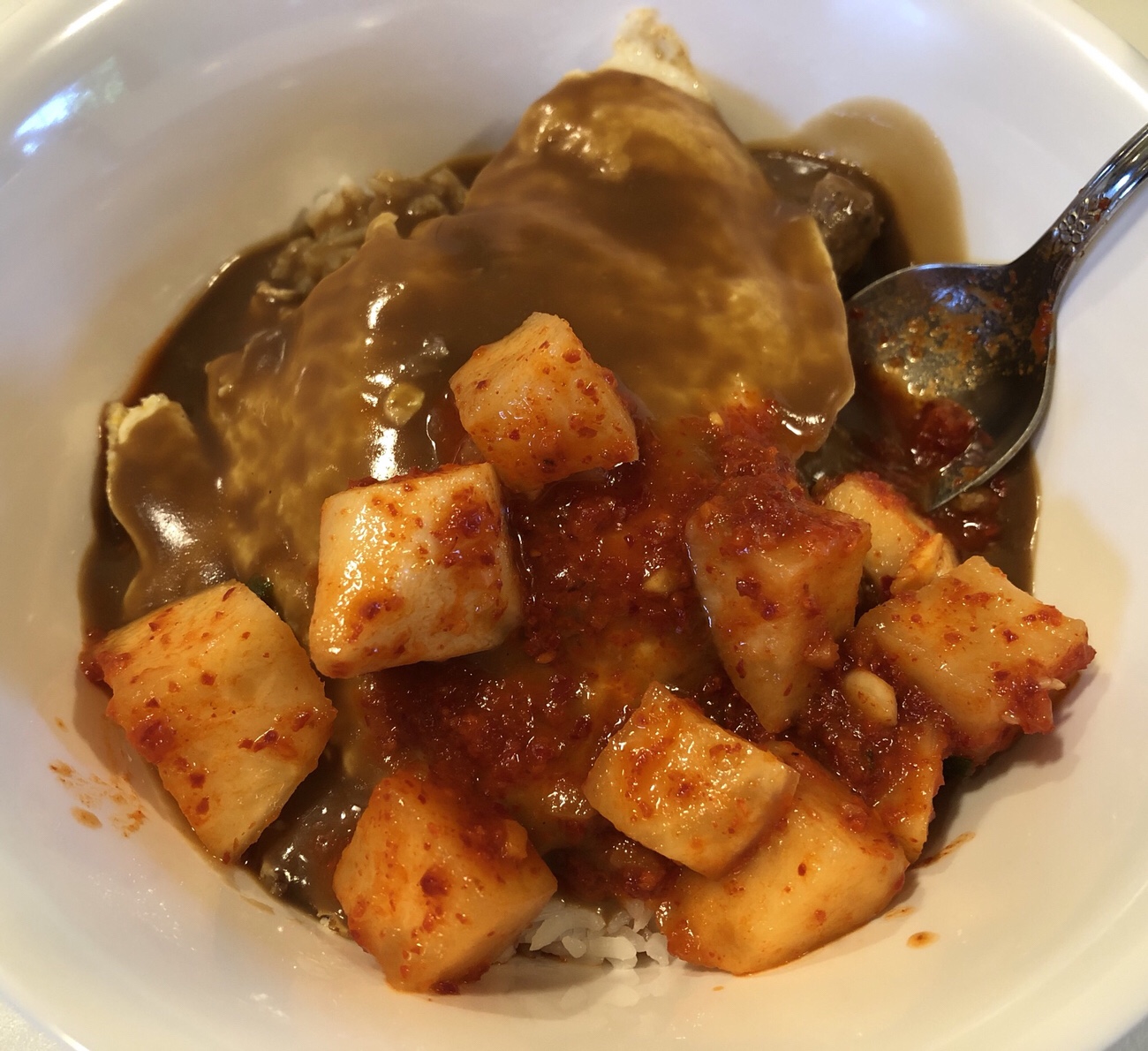
It was a cold and rainy day…the kind of day meant for indoors pursuits. I had purchased a big, fresh Korean radish (Mu 무) recently, along with scallions, and the time felt right to create something tasty from these ingredients. Having recently met someone who mentioned that she enjoyed kimchi but didn’t make it herself, I decided that some of this batch of Kkakdugi (깍두기) would be gifted.





